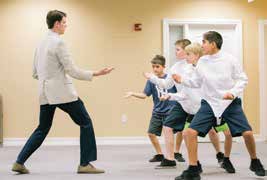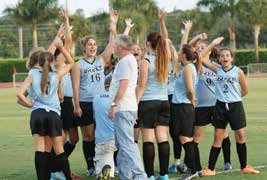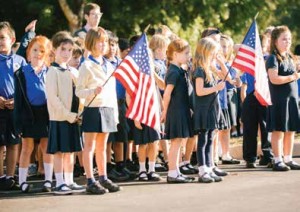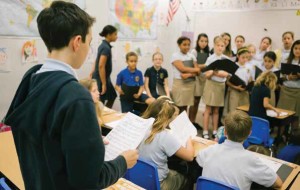Student Centered Education Decisions
In today’s world, we enjoy having choices in almost all aspects of our lives. We also know that when businesses compete for the opportunity to serve customers, we benefit through lower prices, higher quality products, and better overall service. Why should education be any different?
Last month, the Collier County School Board unanimously approved an application for Collier Charter Academy, a new K-8 public charter school. Met with little opposition, this decision will empower families by providing additional educational options for students.
Collier Charter Academy will join five other public charters currently serving 1,400 students in our community.
 Compared to many Florida districts, Collier trails in offering non-traditional public school choices. This could be explained, in part, by an unfounded concern that offering more options would lead to the demise of traditional public education. While it can be easy to oppose the unfamiliar, this perception is wrong to embrace, given how much we welcome competition in every other area of our lives. Could you imagine our county commissioners forbidding Whole Foods from opening in Naples, out of concern that it would force Publix out of business?
Compared to many Florida districts, Collier trails in offering non-traditional public school choices. This could be explained, in part, by an unfounded concern that offering more options would lead to the demise of traditional public education. While it can be easy to oppose the unfamiliar, this perception is wrong to embrace, given how much we welcome competition in every other area of our lives. Could you imagine our county commissioners forbidding Whole Foods from opening in Naples, out of concern that it would force Publix out of business?
Thankfully, we are seeing a positive shift in the way people view choices in public education, both locally and statewide. According to Step Up for Students, the nonprofit that administers Florida’s Tax Credit Scholarship Program for low-income students, 42 percent of Florida’s three million school-aged children attend a public, magnet, charter, private, virtual or home option outside of the traditional public school to which they are zoned.
 Options are necessary to sufficiently prepare the next generation of leaders for Southwest Florida and beyond. While the traditional public and private schools in our area have historically served most families well, there is still room for improvement. In Collier County, only two of our traditional public high schools had at least 70 percent of their 10th grade students test on grade level in English Language Arts. In Mathematics, just one traditional public high school hit the 70%
Options are necessary to sufficiently prepare the next generation of leaders for Southwest Florida and beyond. While the traditional public and private schools in our area have historically served most families well, there is still room for improvement. In Collier County, only two of our traditional public high schools had at least 70 percent of their 10th grade students test on grade level in English Language Arts. In Mathematics, just one traditional public high school hit the 70%
mark for 10th grade students proficient in Algebra I, a requirement for graduation.
We must do more for these young people. One way to better serve these students is to provide quality educational options that cater to their individual needs and learning styles.
Among the most vulnerable students we serve are those with special needs.
 Thankfully, this year’s tripled expansion of the Personal Learning Scholarship Accounts (PLSAs), established in 2014 by the state, creates more opportunities for students to achieve academic success. More than 5,000 parents will be able to personalize the education of their children with unique abilities by directing money toward a combination of programs and approved providers including schools, therapists, and curriculum.
Thankfully, this year’s tripled expansion of the Personal Learning Scholarship Accounts (PLSAs), established in 2014 by the state, creates more opportunities for students to achieve academic success. More than 5,000 parents will be able to personalize the education of their children with unique abilities by directing money toward a combination of programs and approved providers including schools, therapists, and curriculum.
Florida was seventh in the nation from 2011-2013 in closing the achievement gap in high school graduation between students with disabilities and all students, and achievement continues to climb as our education system offers more options to families. Having alternatives has better enabled children of varying abilities to reach their potential.
My heart goes out to any parent who agonizes watching their child struggle in a classroom unable to accommodate their specific needs, with no practical alternative. Doesn’t every parent deserve the right to send their child into an environment that nurtures them, challenges them to think, instills confidence, and fosters a love of learning, regardless of whether they can afford to move or pay for private school tuition? While watching my sons navigate through  school, I’ve realized how different their individual needs are and I feel it is my responsibility to do all I can to help them, and all of our district’s students, access choices that help them reach their potential.
school, I’ve realized how different their individual needs are and I feel it is my responsibility to do all I can to help them, and all of our district’s students, access choices that help them reach their potential.
A learning environment can be a good fit for a child for many reasons. I hope Florida continues to expand its choice programs – inside and outside the walls of its traditional public schools.
Our public dollars should follow these children throughout their education, and the parents should decide which choice is best.


Leave a Reply
Want to join the discussion?Feel free to contribute!